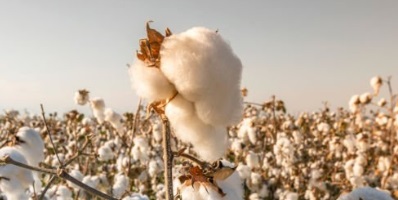History of Egyptian Cotton

Egyptian cotton has a rich history and is renowned for its superior quality and luxurious feel. Here’s a comprehensive overview of the history and evolution of Egyptian cotton:
Egyptian cotton, scientifically known as Gossypium barbadense, is a species of cotton that is native to the Nile River Valley in Egypt. The warm climate, fertile soil, and abundant water supply of the region contribute to the growth of exceptionally long and fine cotton fibers, which are the hallmark of Egyptian cotton.
The cultivation of cotton in Egypt can be traced back to ancient times. Historical evidence suggests that Egyptians have been growing and harvesting cotton since the Pharaonic era, dating back over 5,000 years. The high value and substantial role of cotton deeply shaped the Egyptian economy and culture.
In the early days, Egyptian cotton primarily served domestic needs and was traded locally. Yet, as the global textile industry burgeoned and international trade expanded, Egyptian cotton garnered acclaim for its exceptional quality, leading to its widespread exportation worldwide.
The international reputation of Egyptian cotton soared during the 19th century. The British Empire, one of the dominant powers during that era, established close trade relations with Egypt and recognized the superior quality of Egyptian cotton. The British cotton industry, in particular, had a high demand for this luxurious cotton.
Egyptian cotton became synonymous with luxury and exclusivity. Its long, extra-fine fibers, known as staple fibers, contribute to its exceptional softness, strength, and durability. The length of these fibers, which can reach up to 1.5 inches, allows for the production of high-quality yarn and fabric with a lustrous sheen.
Egyptian Cotton
Over time, Egyptian cotton became a premium choice for high-end textile products, including bedding, towels, apparel, and fine linens. The cotton’s unique properties, such as its breathability and ability to absorb moisture, make it highly desirable for comfort and quality.
The Egyptian government and international organizations like the Cotton Egypt Association have implemented strict certification and labeling standards to safeguard the authenticity and quality of Egyptian cotton. These standards ensure that products labeled as “Egyptian cotton” meet specific criteria, including the use of genuine Egyptian cotton fibers.
In recent years, the Egyptian cotton industry has faced challenges, including counterfeit products and competition from other cotton-producing countries. Some manufacturers have falsely labeled their products as “Egyptian cotton,” leading to a decline in consumer trust. Nevertheless, initiatives are underway to address this challenge and protect the esteemed reputation of Egyptian cotton.
Today, Egyptian cotton remains highly sought after by discerning consumers who appreciate the unparalleled luxury and quality it offers. It maintains its status as one of the world’s finest and most prestigious cotton varieties. The legacy of Egyptian cotton continues to evolve, adapting to modern demands while maintaining its traditional allure and craftsmanship.
Conclusion
The history and evolution of Egyptian cotton showcase its enduring legacy as a symbol of luxury and quality. From its ancient cultivation in the Nile River Valley to its global recognition and association with premium textiles, Egyptian cotton has established itself as a timeless treasure in the textile industry.